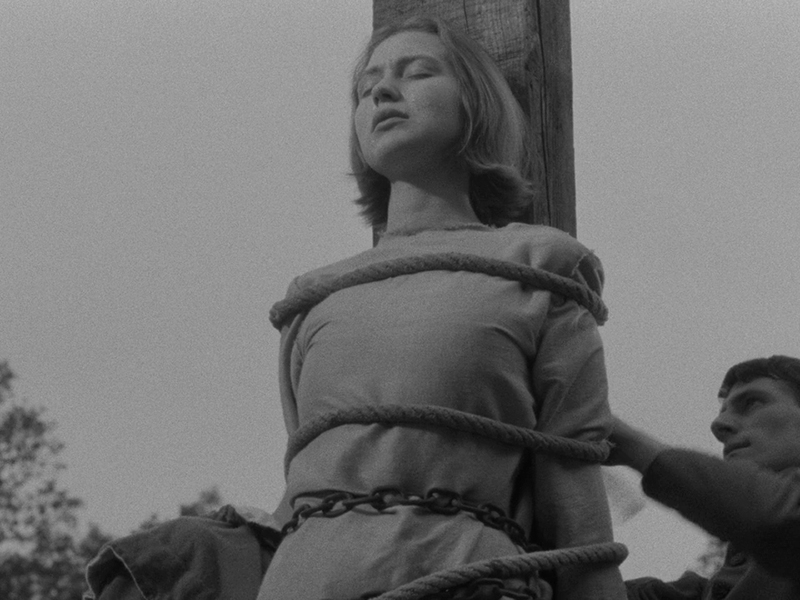
In 1431 Jeanne, a French peasant girl, is imprisoned for heresy and brought to trial at Rouen. Despite rigorous interrogation by the judges and constant persecution from the jailers, her faith remains unshaken. The relentless theological questioning and argument in court is broken only by an ineffectual attempt at torture and an examination to prove her virginity. Jeanne's insistence that her military ventures were bidden by God is scoffed at by the English, who are anxious to destroy the legend already building around her. In a moment of weakness during the trial, Jeanne recants her faith. She is sentenced to life imprisonment, but when she retracts her earlier confession, the court decrees that she be burned at the stake as a witch.
“I brought everything back to Joan, to avoid a ‘period’ style and create an internal intensity. The interrogations serve less to inform us of events, past or present, than to provoke certain specific, profound expressions on Joan’s face, to record the movements of her soul on film. The real subject is Joan—destined for the pyre—and her slow agony. It’s also her internal drama and the mystery, the un-elucidated enigma of this amazing young woman, to which we’ll never have the key. Finally, it’s about injustice assuming the guise of justice, cold reason battling against inspiration and illumination.”
Robert Bresson1
“Les tables et les portes ne sont pas données entières, la chambre de Jeanne et la salle du tribunal ne sont pas données dans des plans d’ensemble, mais appréhendées successivement suivant des raccords qui en font une réalité chaque fois fermée, mais à l’infini. D’où le rôle spécial des décadrages. […] C’est comme si l’esprit se heurtait à chaque partie comme à un angle fermé, mais jouissait d’une liberté manuelle dans le raccordement des parties. […] La perte et le salut se jouent sur une table amorphe dont les parties successives attendent de nos gestes, ou plutôt de l’esprit, la connexion qui leur manque. […] Par là Bresson peut atteindre à un résultat qui n’était qu’indirect chez Dreyer. L’affect spirituel n’est plus exprimé par un visage, et l’espace n’a plus besoin d’être assujetti ou assimilé à un gros plan […] l’affect est maintenant directement présenté en plan moyen, dans un espace capable de lui correspondre."
Gilles Deleuze2

